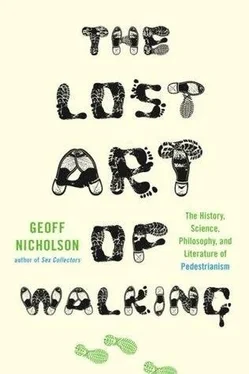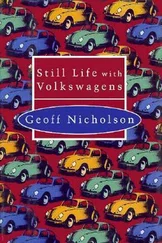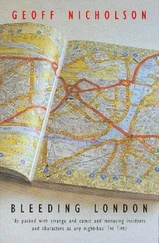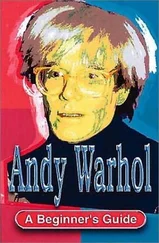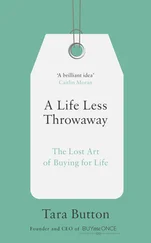When I started going back to New York in the mid-1990 s, and eventually living there, things were different. For one thing I was older, a little tougher, more substantial. I looked less like prey. But the city had changed, too. It was no longer bankrupt, for example, and there weren’t hookers in hot pants on every street corner. And many things about the culture had also changed. If you wanted drugs or pornography you didn’t have to make the trek to Times Square to get them — they were available in any and every neighborhood. People, of course, complained about the Disneyfication of Times Square, bemoaning the fact that the mean spirit and the dark heart of New York had become soft. Any fool could now walk safely in New York, and that just didn’t seem right.
A case can still be made, however, using accident statistics, that walking in New York is a thrillingly dangerous activity, as risky and reckless as playing Russian roulette. Of the 70,000 or so pedestrians who are injured by cars in America every year, 15,000 of them are New Yorkers, a staggering proportion. With 2.7 percent of the nation’s population the city has 21 percent of the injuries. Nearly three-quarters of these occur on crosswalks, and quite a few of them occur while the pedestrian is actually on the sidewalk. That makes for some edgy walking, surely.
In recent years, the figures have improved a little, and although this may owe something to better road design and increased public-safety awareness, it’s also because people are simply walking less, because they’re scared of being run over.
Alcohol plays a surprising part in those statistics. It’s not usually the driver who’s been drinking. Drunken driving accounts for just a few percent of pedestrian deaths, but in 1998 one-third of pedestrians killed by a motor vehicle were legally drunk. Over the years 1998–2001 the proportion had increased to 40 percent. It will surprise nobody to learn that considerably more drunken pedestrian deaths occur at night than in the daytime. Careening around New York City at night with a snootful of booze is such a high-risk activity, it’s a surprise that anybody survives at all.
♦
You could be forgiven for not knowing what a psychogeog-raphy festival in Brooklyn might be like. I had little idea myself.
Indeed, you could be forgiven for not knowing what psychogeography is, period, but with that I can help. Psychogeography is described rather elegantly by the author Merlin Coverley as ‘what happens when psychology meets geography’. It’s a French invention, the brainchild of Guy Debord (1931-94), a Lettrist, then a Situationist, who defined it, in 1955, in a paper called ‘Introduction to a Critique of Urban Geography’ as ‘the study of the precise laws and specific effects of the geographical environment, consciously organized or not, on the emotions and behaviour of individuals’. This is fine as far as it goes, but it doesn’t go very far, and Debord himself didn’t go very much further.
The chief, glaring objection to Debord’s definition is that it’s hard to see that there are any ‘laws’ whatsoever about the way we experience environments as we walk. Rather, there is a cluster of imprecise and frequently conflicting personal impressions and preferences. There is a general consensus that walking in the Tivoli Gardens is preferable to wandering along a street filled with dangerous crackheads, but it wouldn’t be hard to find some urban explorer who took the opposite view. You and I walk down the street together and come to the opening of a dark alleyway — I think it’s intriguing, you think it’s scary. Some people think that Disneyland’s Main Street, U.S.A. is a walkway of charm and winsome nostalgia — others don’t.
These different reactions obviously say something about individual psychologies, preferences, and previous experiences in dark alleyways or main streets, but surely nobody is experiencing the effect of anything as hard and fast as a ‘law’. In which case psychogeography seems to be concerned with a minor statute like the prohibition of jaywalking rather than a universal law like gravity.
Walking was, and remains, psychogeography’s main mode of operation — specifically, in French, the ‘ derive ’, in English the ‘drift’, which Debord defined as ‘locomotion without a goal’, abandoning your usual walking habits and letting the environment draw you in, letting your feet take you where they will and where the city dictates. By drifting, he believes, we detect the ‘ambiance’ of different parts of the city, their special feeling and psychic atmospheres. If we let ourselves drift we are drawn by the ‘unities of ambiance’. Naturally he accepts that these ambiances may not be unified at all, and may change abruptly from one street to the next. All this strikes me as perfectly, unarguably true, but also patently obvious to anyone who’s walked though a city, and not quite worth the effort of whipping up into a theory.
Where Debord becomes insufferable is in his insistence that the drift should be a group activity. Yes, he says, you could drift by yourself, but ‘all the indications are that the most fruitful numerical arrangement consists of several small groups of two or three people who have reached the same awakening of consciousness, since the cross-checking of these groups’ impressions makes it possible to arrive at objective conclusions’. This is obviously twaddle. If they’ve all reached the same level of consciousness, then what kind of cross-checking can possibly go on, let alone objectivity? But the real objection is to that very phrase ‘awakening of consciousness’. It sounds, at best, doctrinaire, at worst Stalinist, with a broad hint of the clique and the school playground. ‘You can’t come walking with us because you haven’t reached the required level of awakened consciousness’.
But perhaps I am taking Debord too seriously. Other members of the Situationist International mockingly referred to him as ‘The Bore’, although coming from a member of the Situationist International this is a bit rich. Then again, the group remained small, because of Debord’s practice, as David Bellos puts it in his biography of Georges Perec, of ‘excommunicating members one by one, until he was in fact the only one left’.
Debord did insist that ‘the derive entails playfully constructive behavior’, and the idea that the city can be a place of elaborate fun and games is an appealing one, and it sounded as though there would be plenty of that sort of thing on offer at the Conflux festival. For instance, there was ‘The World Is My Studio’, in which an artist named Sitka was giving ‘a narrated tour in which she talks about everyday objects and spaces as if they were her work, contextualizing things like moving cars, people’s pets and social gestures as the products of her artistic practice’.
There was Paul Harley’s ‘Pansy Project’, in which he revisited ‘city streets planting pansies where he has received verbal homophobic abuse. These self-seeding pansies act as a living memorial to this abuse and operate as an antidote to it — each pansy’s location is named after the abuse received then posted on his website’.
♦
Things were scheduled to start at ten o’clock on Thursday morning at Conflux headquarters in the art gallery on Roebling Street. I got up in good time to discover that New York was caught in the fierce tail of a hurricane. It had never crossed my mind that it might rain in New York in September, and I had no idea what effect it would have on the festivities. I’d thought I might get to the gallery by walking over the Williamsburg Bridge, but that now seemed unnecessarily challenging. I told myself that walking in the rain had a long, respectable, and bittersweet history — even so, I took the subway from Manhattan to Williamsburg.
Читать дальше
